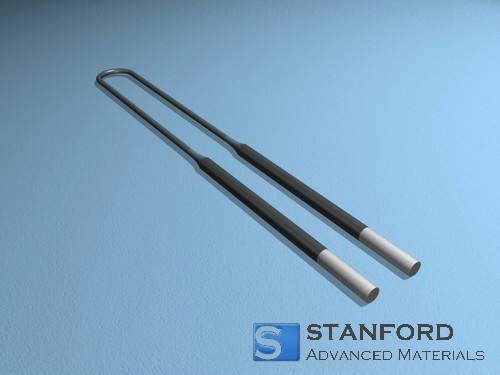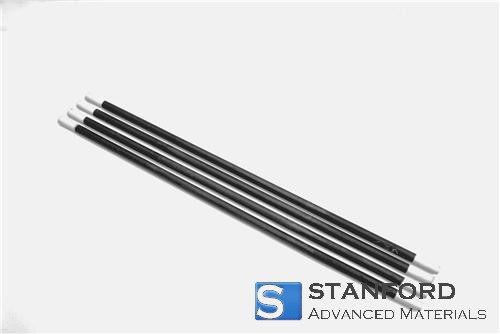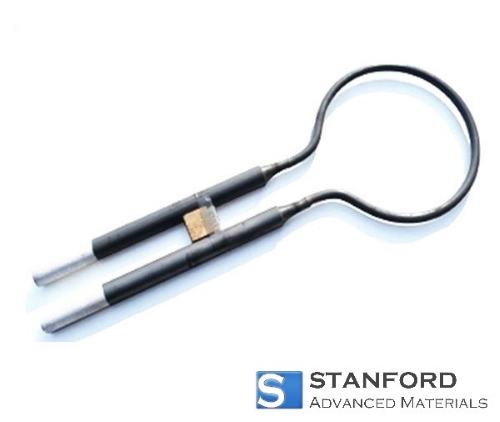Heating Elements: Molybdenum Disilicide vs Silicon Carbide
What Are Heating Elements?
Heating element materials are specialized substances designed to convert electrical energy into thermal energy through the process of Joule heating. These materials are chosen for their ability to withstand high temperatures, resist corrosion and oxidation, and maintain electrical resistance stability over a wide range of operating conditions.
Common materials include metals such as nichrome, Kanthal, and ceramics like molybdenum disilicide (MoSi2) and silicon carbide (SiC), each offering unique properties that make them suitable for specific heating applications. This article focuses on comparing these two prominent ceramic materials used as heating element materials. To begin, let's learn about the properties and applications of molybdenum disilicide (MoSi2) and silicon carbide (SiC).
Related reading: What Are the Ceramics Used as Heating Elements?
Molybdenum Disilicide vs Silicon Carbide
MoSi2 (Molybdenum Disilicide) and SiC (Silicon Carbide) are key materials in the design of high-temperature heating elements. They stand out for their exceptional performance and durability under extreme conditions. These materials are celebrated for their ability to maintain structural integrity and electrical properties at temperatures that can reach up to 1800°C for MoSi2 and 1600°C for SiC. Therefore, MoSi2 and SiC have become indispensable in a variety of industrial and laboratory settings.
1. Molybdenum Disilicide Heating Elements
MoSi2 is particularly valued for its robust oxidation resistance at high temperatures. When exposed to an oxidizing atmosphere, MoSi2 forms a protective silica (SiO2) layer on its surface, effectively guarding the material against further oxidation and extending its lifespan.

This characteristic is crucial for applications in aggressive environments, such as high-temperature furnaces used in materials research, ceramics sintering, and the production of glass or semiconductor materials.
1. Silicon Carbide Heating Elements
SiC, on the other hand, is renowned for its excellent thermal conductivity and mechanical strength, even at elevated temperatures. Its resistance to thermal shock and chemical corrosion makes SiC an ideal choice for heating elements in environments subject to sudden temperature changes or exposure to corrosive gases.

SiC heating elements find common use in metal treatment processes, electronic component manufacturing, and the firing of ceramics and glass.
The following table provides a summarized comparison between these two heating element materials in high-temperature applications. Hope that you can get something useful about the key differences and attributes of each material.
Table 1. Molybdenum Disilicide vs Silicon Carbide
|
|
||
|
Key Properties |
Robust oxidation resistance at high temperatures |
Excellent thermal conductivity and mechanical strength |
|
Protective Mechanism |
Forms a protective SiO2 layer in oxidizing atmospheres, extending lifespan |
Resistant to thermal shock and chemical corrosion |
|
Ideal Environments |
Aggressive, high-temperature environments |
Environments with sudden temperature changes or corrosive gases |
|
Typical Applications |
High-temperature furnaces in materials research, ceramics sintering, glass, and semiconductor production |
Metal treatment, electronic component manufacturing, ceramics, and glass firing |
1. Various Shapes of MoSi2 and SiC Heating Elements
Both materials come in various shapes and allow for flexible integration into different heating systems. MoSi2 elements are commonly available in various forms, including rods, U-shaped, W-shaped, and custom-made shapes to fit specific furnaces and applications. While SiC heating elements are available in straight rods, spiral elements, U-shaped, and more complex forms tailored to specific application needs.

MoSi2 and SiC, Which Is Better?
In the realm of high-temperature heating applications, the choice between Molybdenum Disilicide (MoSi2) and Silicon Carbide (SiC) heating elements hinges on several key factors. Both materials are suitable for different scenarios. Here's a closer look at what considerations should guide your choice. You can also check the table below.
- Temperature Range: MoSi2 is preferred for very high-temperature applications (up to 1800°C), while SiC is suitable for applications up to 1600°C but offers faster thermal response.
- Atmospheric Conditions: SiC's versatility across different atmospheres makes it suitable for a broader range of environments than MoSi2, which excels specifically in oxidizing conditions.
- Application Specifics: The choice between MoSi2 and SiC often depends on specific application requirements, including the desired temperature profile, atmospheric conditions, and physical space constraints within the heating equipment.
Table 2. Molybdenum Disilicide and Silicon Carbide Heating Elements
|
|
||
|
Temperature Range |
Preferred for applications up to 1800°C. |
Suitable for applications up to 1600°C, but offers a faster thermal response. |
|
Atmospheric Conditions |
Excels in oxidizing conditions due to its ability to form a protective oxide layer. |
Offers versatility across different atmospheres, suitable for a broader range of environments. |
|
Application Specifics |
MoSi2 is ideal for high-temperature stability in specific conditions. |
SiC is chosen for its flexibility and thermal shock resistance, accommodating a wider variety of application specifics including rapid temperature changes. |
The selection between MoSi2 and SiC heating elements should be made considering the specific requirements of the application, including the operational temperature, atmosphere, thermal cycling needs, and the physical configuration of the heating system. MoSi2 is the choice for high-temperature stability in oxidizing conditions and SiC offers flexibility and resistance to thermal shock across a wide range of environments.
Are There Any Other Heating Element Materials?
Expanding beyond MoSi2 and SiC, the realm of ceramic heating elements is rich with a variety of materials
- Alumina (Al2O3): Renowned for thermal conductivity and shock resistance, alumina is ideal for uniform heat distribution in electrical furnaces and kilns.
- Zirconia (ZrO2): With a high melting point and resistance to extreme temperatures, ZrO2 is suited for metallurgical and chemical processing.
- Boron Nitride (BN): Known for exceptional thermal shock resistance and electrical insulation at high temperatures, this material is used in semiconductor manufacturing and sapphire crystal growth, where purity and chemical inertness are crucial.
- Titanium Diboride (TiB2): Combining high electrical conductivity with chemical resistance, it is favored in electrochemical processes and handling molten metals.
Stanford Advanced Materials (SAM) emerges as a reliable supplier in this sector, offering an array of shapes such as rods, U-shaped, W-shaped, and H-shaped configurations. Their comprehensive catalog also includes materials like Al2O3, ZrO2, BN, TiB2, alongside custom solutions tailored to suit a broad spectrum of industrial and technological needs.
Conclusion
Molybdenum Disilicide (MoSi2) and Silicon Carbide (SiC) play pivotal roles in the realm of high-temperature heating elements. MoSi2 excels with its ability to resist oxidation up to 1800°C, creating a protective SiO2 layer in environments rich in oxygen, whereas SiC is renowned for its superior thermal conductivity, robust mechanical strength, and capability to withstand thermal shock up to 1600°C. Selecting between MoSi2 and SiC for heating elements hinges on specific application needs. Hope that you can get the perfect heating element material for your business or research.








